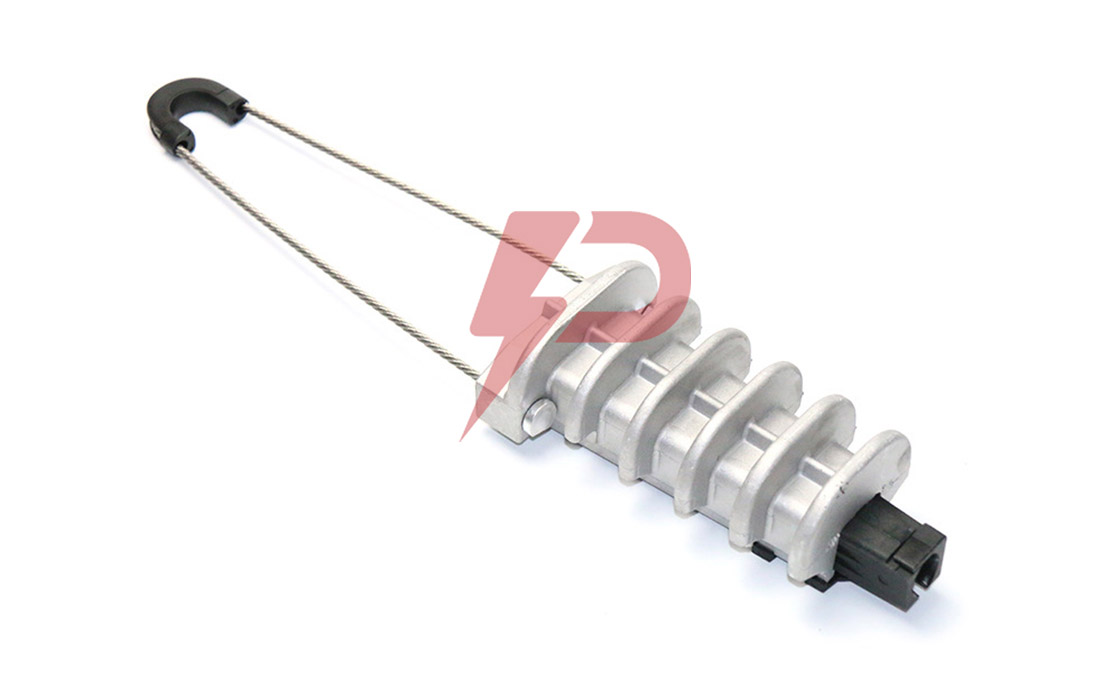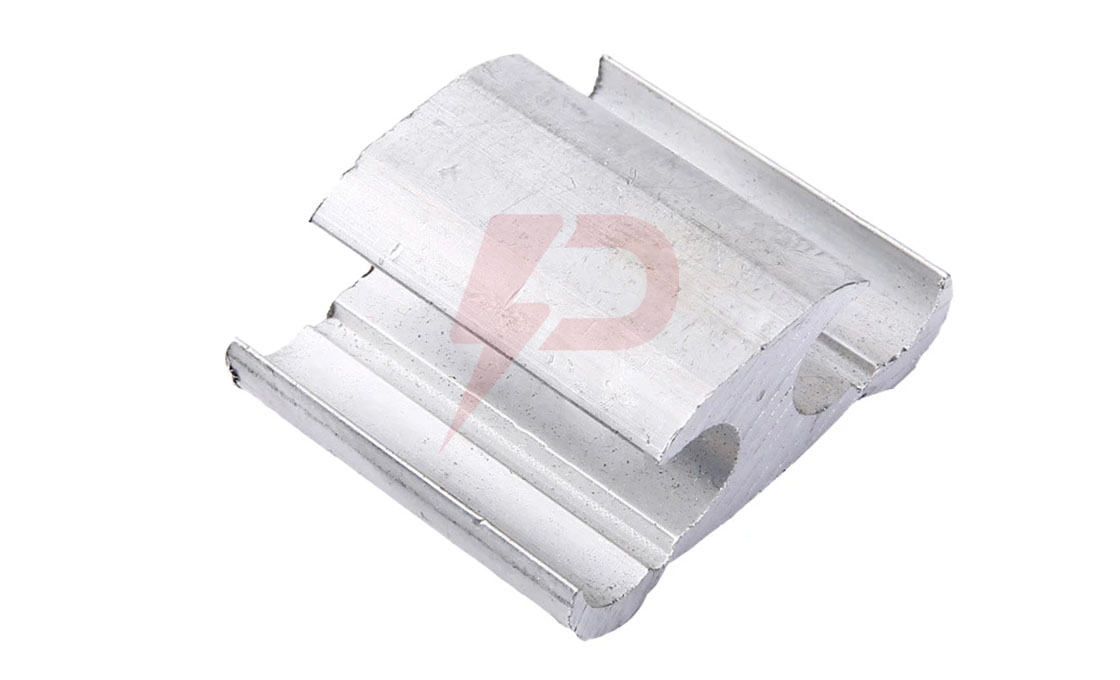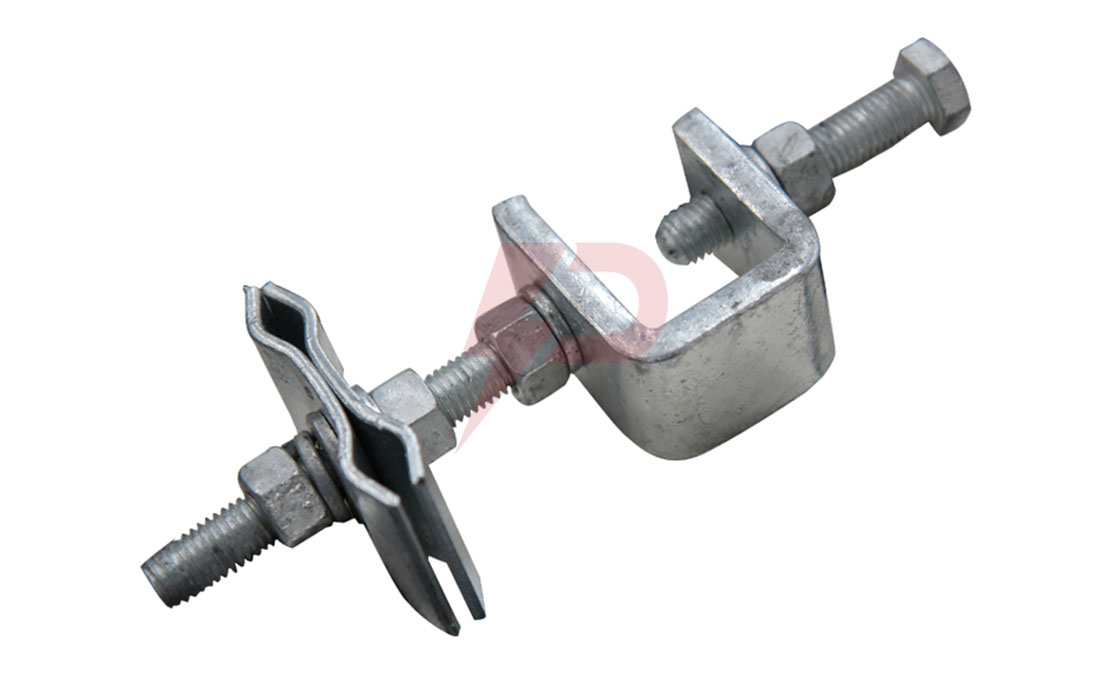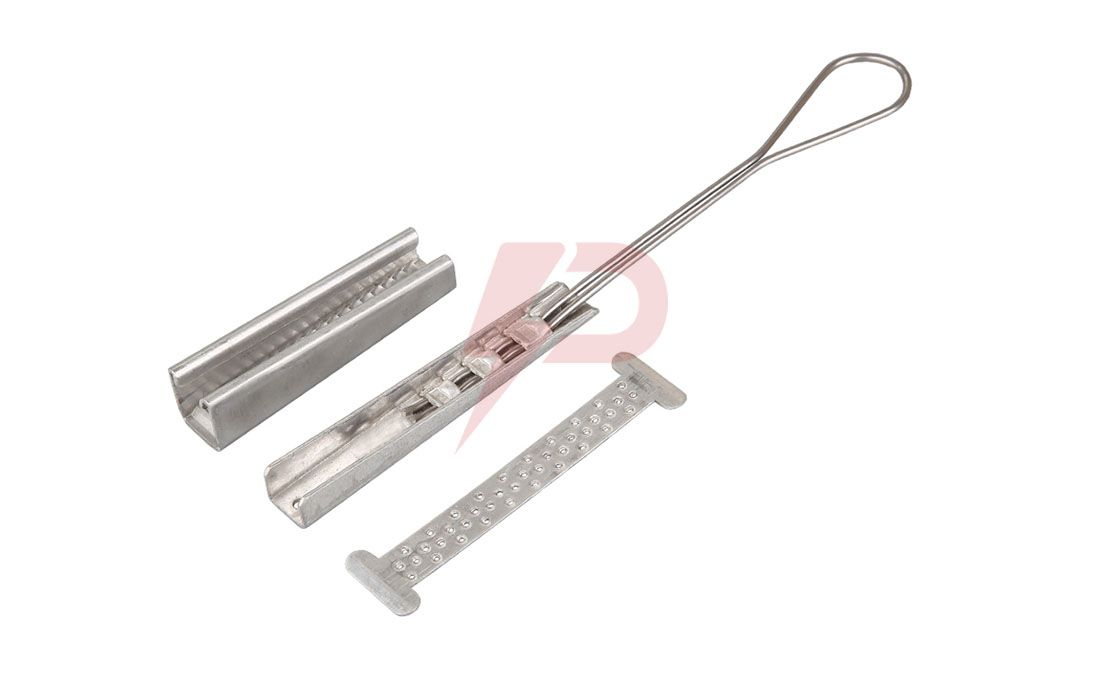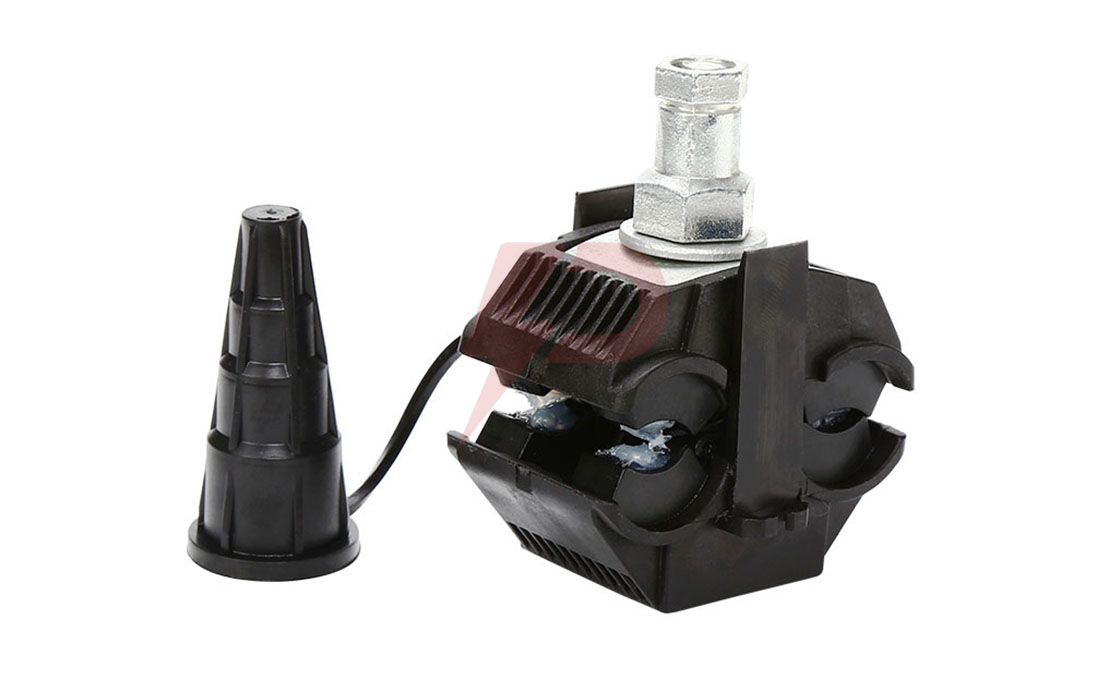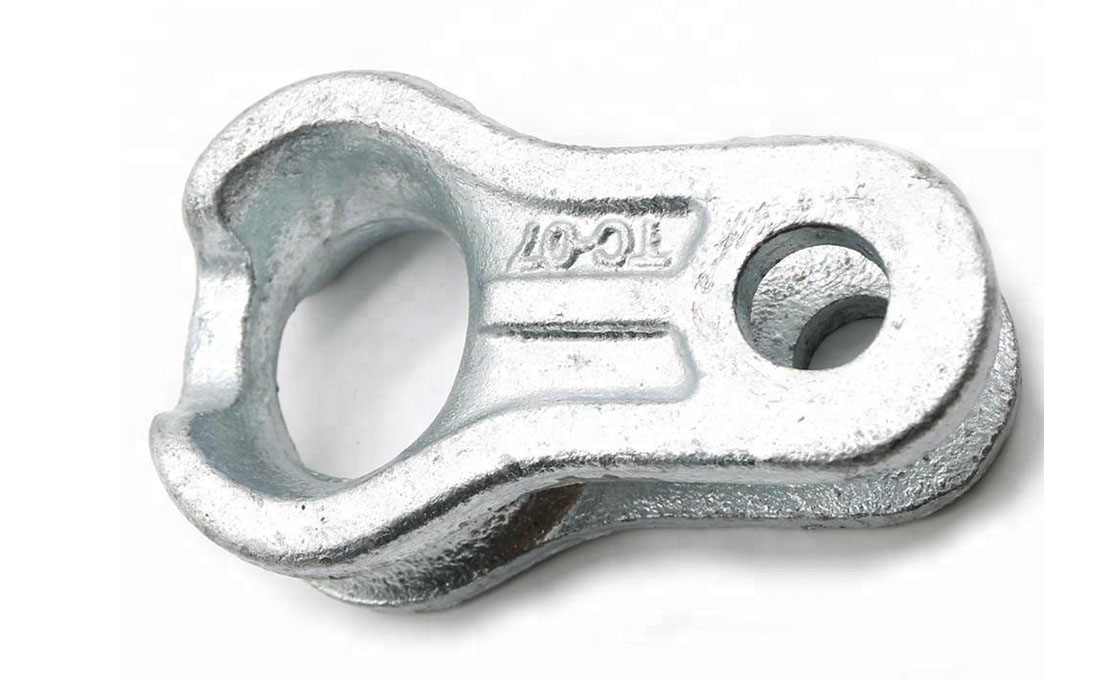Pince d'ancrage
Une pince d'ancrage, également connue sous le nom de pince de tension de type coin ou pince sans issue, est un dispositif utilisé pour sécuriser et ancrer les câbles dans les installations aériennes. La structure est généralement constituée d'un corps en plastique ou en alliage d'aluminium résistant aux UV., blocs de cale en nylon ou polymère durable, et un anneau de fixation en fil d'acier galvanisé à chaud. Les pinces d'ancrage sont principalement utilisées dans les lignes électriques entre les bâtiments résidentiels et les complexes industriels, sécuriser les câbles à fibre optique ADSS, Câbles ABC, et lignes de télécommunications.
Les pinces d'ancrage empêchent les fils d'être affectés par le givrage, brise, ou par gravité tout en fournissant une installation fiable lorsqu'il est tendu entre les supports de ligne de transmission. L'installation consiste à serrer le câble à l'aide d'une poulie, fixer la pince à un crochet ou un support, placer le câble à l'intérieur des cales, et relâcher progressivement la tension jusqu'à ce que les cales fixent le câble. Les pinces d'ancrage sont essentielles pour maintenir la stabilité et la sécurité des connexions électriques dans divers environnements extérieurs.
Caractéristiques de la pince d'ancrage:
• Haute résistance à la traction avec des matériaux résistants à la corrosion
• Mécanisme de coin auto-ajustable pour une installation sans outil
• Compatible avec les diamètres de câble de 4 mm à 20 mm
• Construction résistante aux intempéries pour une utilisation extérieure à long terme
• Empêche les dommages aux câbles grâce à une répartition uniforme de la pression
• Répond aux normes internationales telles que NFC 33-041

Pince d'ancrage de type coin Dessin
Taper | Section transversale (mm2) | Messagers DIA(mm) | Charge de rupture (KN) |
PA16 | 10-70 | 6-13 | 3 |
PA16-95 | 4-120 | 4-16 | 2.5 |
PA25 | 6-25 | 4-8 | 3.5 |
PA50 | 10-50 | 6-11 | 6 |
PA70 | 25-70 | 8-14 | 8 |
Foire aux questions (FAQ)

Qu'est-ce qu'une pince d'ancrage?
Une pince d'ancrage est un dispositif utilisé pour sécuriser et stabiliser les câbles aériens, en particulier dans les lignes électriques et de télécommunications. Il est constitué d'un corps conique, cales à dents en métal, et une charnière flexible. Les pinces d'ancrage sont conçues pour maintenir une tension appropriée dans les lignes de câbles tout en protégeant l'isolation du câble..
Où les pinces d'ancrage sont-elles couramment utilisées?
Les pinces d'ancrage sont utilisées dans les lignes électriques aériennes, lignes de télécommunication, et infrastructures de services publics. On les trouve couramment:
- Au début et à la fin des chemins de câbles
- Lors de changements brusques de direction ou de virages
- En cas de différences de hauteur entre les poteaux
- Pour la fixation des câbles de lignes à haute tension
- Dans les réseaux du dernier kilomètre et les installations de moyenne à longue portée
Quels sont les avantages de l'utilisation de pinces d'ancrage?
Les pinces d'ancrage offrent plusieurs avantages:
- Fixation fiable des fils
- Conception simple et rentable
- Installation rapide et facile sans outils spéciaux
- Polyvalence pour différentes longueurs de travée
- Protection contre les vibrations dues au vent
- Pas besoin de retirer l'isolation du câble lors de l'installation
- Durée de vie prolongée des lignes aériennes de communication
Comment installer une pince d'ancrage?
Pour installer une pince d'ancrage:
- Insérez la cale dans le boîtier de serrage
- Placer le câble à l'intérieur des cales
- Fixez la pince au crochet ou au support de poteau préinstallé
- Relâchez progressivement la tension sur le câble jusqu'à ce que les cales le maintiennent en place.
- Retirer l'équipement de tension
- Fixez le deuxième côté du câble le long de la ligne
Quels facteurs doivent être pris en compte lors de la sélection d'une pince d'ancrage?
Lors de la sélection d'une pince d'ancrage, considérer:
- Diamètre d'isolation du câble
- Type de câble (par ex., ADSS, LV-ABC)
- Distance entre les pôles
- Exigences de tension des câbles
- Conditions environnementales (température, Exposition aux UV)
- Longueur de travée (baisse, court, moyen, ou longue portée)
Comment les pinces d'ancrage protègent-elles les câbles?
Les pinces d'ancrage protègent les câbles en:
- Prévenir l'affaissement dû au vent, pesanteur, ou du glaçage
- Réduire le risque d’endommagement des câbles et de destruction de l’intégrité
- Prolonger la durée de vie des lignes aériennes de communication
- Assure une fixation sécurisée sans endommager l’isolation des câbles
- Résistance aux forces de rotation et aux stress environnementaux
De quels matériaux sont fabriquées les pinces d'ancrage?
Les pinces d'ancrage sont généralement fabriquées à partir de:
- Corps: Alliage d'aluminium moulé à haute résistance ou plastique durable
- Coins: Plastique technique ou nylon résistant aux UV et aux intempéries
- Caution: Fil flexible en acier inoxydable résistant à la corrosion
- Anneau de fixation: Fil d'acier galvanisé à chaud
Comment entretenir les pinces d'ancrage?
Pour maintenir les pinces d'ancrage:
- Inspectez régulièrement les dommages ou les câbles desserrés
- Nettoyer pour éliminer la saleté et les substances corrosives
- Appliquer un lubrifiant approprié pour améliorer la durabilité
- Réparez ou remplacez rapidement les pinces endommagées
- Conserver au sec, emplacement protégé lorsqu'il n'est pas utilisé
Les pinces d'ancrage peuvent-elles être utilisées avec les câbles ADSS?
Oui, les pinces d'ancrage peuvent être utilisées avec ADSS (Autoportant entièrement diélectrique) câbles. Ils sont conçus pour tendre et sécuriser les câbles ADSS sur des poteaux ou d’autres structures de lignes aériennes sans endommager l’isolation du câble..



